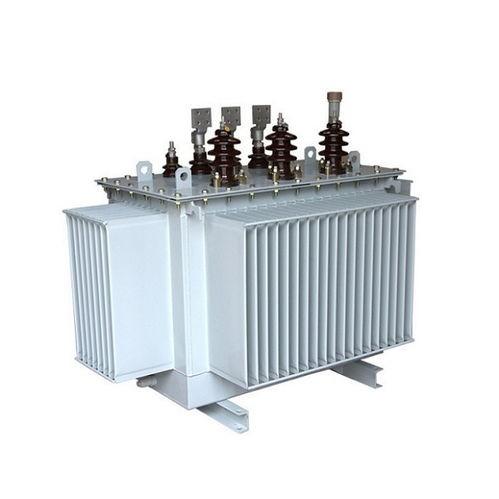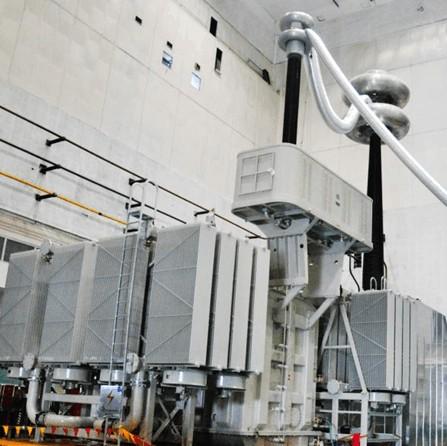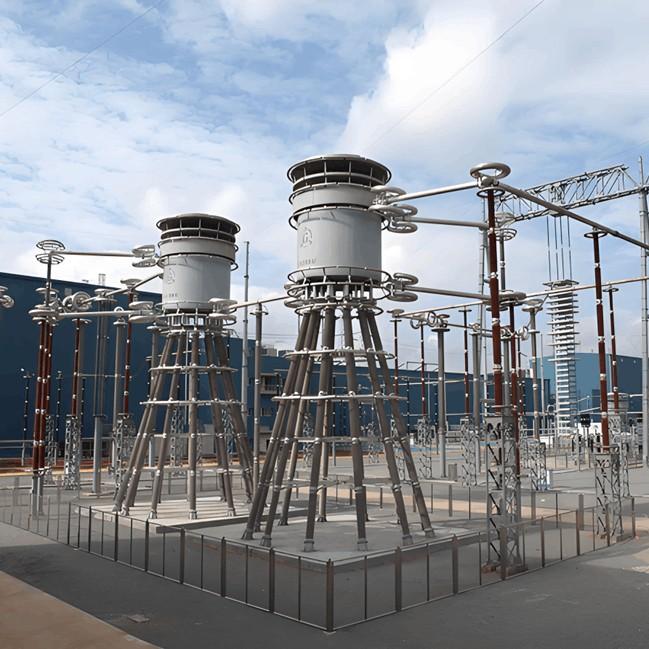1 Príomhtheoiríochtaí na n-reatoirí beaga comhshoicheanta i stáisiúin 500kV
1.1 Foinsí agus Róil
Is comhbhaint ríthábhachtach é an reator sa chóras fuinnimh chun an gaol idir an réamhchúl AC agus an voltag a chontrollú, agus is féidir é a roinnt go hiondúil agus induicithe. Reatora induicteacha teorainn ar chuirréid ghearrscuaine agus feabhsaíonn stabilité; reactora capacitiv fágann éifeachtacht trasnála agus cáilíocht voltaga. Is gnách a bhíonn reator comhshoicheant beag ceangailte idir an pointe comhshoicheant córais trí phhasa agus talamh.
I stáisiúin 500kV (ríthábhachtach do trasnáil fuinnimh mórscáile, fada leat), tá reatora mar seo thar a bheith tábhachtach. Téarann siad teorainn ar chuirréid ghearrscuaine, laghdóidh siad callacha agus feabhsóidh siad stabilité. Díoltas siad do chuirréid/voltage dhoilleathacha a dhéanfaidh damáiste ar tháirgeadh inmharthana, ag feabhsú cáilíocht fuinnimh. Chomh maith leis sin, cabhróidh siad le tuairisciú/ cosaint fheallana trí oibriú le hailmhíonna mar bhriseadh ciorcal agus relais chun fhealláin a aisigh níos tapúile agus níos cruinne.
1.2 Cineálacha agus Carachtarsuíochtaí
Tá aitheantas ag reactora beaga éagsúla a bhfuil a n-ardacht, a n-ionsaí agus a scéalta úsáide féin. Nuair a roghnaítear reator beag do pointe comhshoicheant i stáisiún 500kV, ní mianach anois go mbeidh roinnt deacrachtaí a lua, lena n-áirítear riachtanais speisialta an chórais, teorainneacha costais, agus dúshlán cothaithe. Mar sin, is gnách a bheith sármhaith a thuiscint ar carachtarsuíochtaí gach cineál reator beag chun roghnú éifeachtach a dhéanamh.
Ginearálta, is féidir an roghnú a dhéanamh trí trí mhodh: de réir luach reactance, de réir struchtúr, agus de réir móid chontrole, mar atá le feiceáil i Tabhlach 1.

2 Caighdeáin agus Modhanna Roghnaithe
2.1 Comhparáid idir Caighdeáin Náisiúnta agus Idirnáisiúnta
Nuair a roghnaítear reactora beaga comhshoicheanta do stáisiúin 500kV, is ríthábhachtach tuiscint agus comhparáid a dhéanamh ar chaighdeáin náisiúnta agus idirnáisiúnta. Seo a chinntíonn gur árd cáilíocht agus foirneolas a bhíonn ag na pródúidí agus gur sásíonn siad riachtanais réigiúnacha agus spéisifige.
Idirnáisiúnta, tá an IEC (International Electrotechnical Commission) mar ealaíontóir i dtosach caighdeán uirlisí fuinnimh. Tá na caighdeáin IEC níos coitianta agus níos cruinne, agus cuireann siad béim ar dhearcadh, déanamh, trialacha, agus cothú — minic as a mheastar mar "caighdeáin óir" domhanda. In China, suíomhóidh na caighdeáin go hiondúil faoi Stáit Grid Corporation nó institiúidí gaolmhaire. Tá sé seo a chur ar cheann de phracticity agus éifeachtacht costais, ach d'fhéadfadh siad a bheith níos cúthaileach i gcúrsaí cosaint timpeallachta, mar atá le feiceáil i Tabhlach 2.

2.2 Modhanna agus Pearscoipe Roghnaithe
I roghnú reactora beaga comhshoicheanta do stáisiúin 500kV, tá dhá gné príomha involued: imiteachas ríomhaireach agus dearbhú taiscéalaí. Tá ardacht agus ionsaí amháin ag gach ceann, ach nuair a únaítear iad, is féidir tuarascáil compordach agus cruinn a dhéanamh chun a chinntiú go mbíonn an roghnú rathúil.
Tá an staid simuláid-ríomhaireachta an-tábhachtach. Ar dtús, déan anailís riachtanais chun paramaithe leictreac (cúrréid, voltag, millseal) a shonrú mar bhonn do ríomh. Úsáid modhanna/algoritmi cruinne chun paramaithe príomha mar ghéarchéimí reactance agus curréid ráite a aimsiú. Ansin, úsáid boglaim (mar shampla, PSS/E, DIgSILENT) chun simuláid córas díolta. Seo a chur isteach ar thorthaí agus éifeachtacht an reator a sheiceáil faoi chondae éagsúla.
Tá na hardacht freagrach agus éifeachtacht costais — simuláid pre-installation a dhéanamh chun éifeachtacht a sheiceáil chun a chosaint ar roghnú uirlisí míchruinn, agus a chosaint ar chostais ama. Teorainn: Tá torthaí bunaithe ar chúlúlacht an modh, agus is deacra a dhéanamh modhanna cruinne a chruthú agus is deacra a dhéanamh boglaim gairmiúil agus scileanna teicniúla láidir.
2.3 Dearbhú Taiscéalaí
Compared with computational simulation, experimental verification directly assesses reactor performance. After selecting a reactor type/specification, prototype/sample tests first run in labs to check basic performance and reliability ⁵. Then, rigorous on - site tests follow — in actual 500kV substations, reactors face complex conditions, the ultimate test of performance/reliability.
The strength of experimental verification is direct observation of real - world performance. Analyzing real - condition data ensures reactors meet design/operation needs. But it has downsides: multiple experiments and long - term data collection drive up costs and time.
3 Analysis Cás Fheidhme
3.1 Cás Cúlúlacht
This case features a 500kV substation in a western city center, powering nearby commercial zones and residential areas. The region has a subtropical climate (15°C annual average temperature, 60% relative humidity), high power demand, a complex grid, and peak loads hitting 400MW.
3.2 Feidhmchlár Process
3.2.1 Roagnosis agus Suíomhú
Selection is key to project success, so the stage gets heavy time/resource investment. The team does in - depth demand analysis, evaluating grid load traits, current/voltage needs, and special conditions (e.g., short circuits, overloads).
Based on this, they run calculations and simulations. Using software like PSS/E, they model reactor performance under diverse scenarios (short - circuit current limiting, system resonance, current imbalance). Simulations show a high - reactance, oil - immersed, actively controlled reactor suits best. A small neutral - point reactor (rated current 2000A, reactance 10Ω) of this type is tentatively chosen. To confirm, the team references domestic/international standards (e.g., IEC), local power standards, and prior research in similar cases.
After getting approval from all stakeholders (power companies, design institutes, equipment suppliers), installation starts. A professional team handles physical installation, electrical connections, and system integration. Post - installation, strict on - site tests/commissioning check reactance accuracy, system response speed, and coordination with other power equipment for stable operation.
3.2.2 Oibríocht agus Monatóireacht
Once the equipment is put into operation, an advanced monitoring system is used for real - time data tracking and performance evaluation. It includes not only the monitoring of current and voltage but also the monitoring of equipment temperature, oil quality, and other key parameters.
3.2.3 Cothú agus Óptamáil
Due to the selection of oil - immersed type and active control, the maintenance of the equipment is relatively simple. Maintenance is only required once a year, mainly including oil quality inspection and calibration of electrical parameters. Based on the operation data, necessary system optimizations are also carried out to further improve the performance and reliability of the equipment.
3.3 Anáil Buntáistí
3.3.1 Buntáistí Airgeadais
Cost savings: Owing to careful selection and optimization, the reactor demonstrates a high degree of stability and reliability during operation, greatly reducing the maintenance and replacement costs caused by equipment failures. According to statistics, compared with traditional reactors, the maintenance cost saved within one year is about 20%.
Efficiency improvement: The application of the reactor significantly improves the operation efficiency of the power grid. According to preliminary data, the overall efficiency of the system has increased by about 5%, which means higher power output and lower operation costs.
Return on investment: Considering the equipment cost, operation cost, and efficiency improvement comprehensively, the investment return period of this reactor is expected to be within three years, which is a quite satisfactory result.
3.3.2 Buntáistí Teicneolaíocha
System stability: The application of the reactor significantly improves the stability of the system. In case of short circuits or other abnormal situations, the reactor can effectively limit the current and protect the power grid and equipment from damage.
Reliability: Due to the selection of the high - reactance, oil - immersed, and actively controlled reactor, the equipment demonstrates extremely high reliability under various working conditions. No failures or abnormalities occurred within one year, greatly improving the reliability of the power grid.
Flexibility and adaptability: The active control system enables the reactor to quickly respond to changes in the power grid, such as load fluctuations and voltage changes, which increases the flexibility and adaptability of the system.
4 Conclusion
This research comprehensively explores the selection, application, and benefits of small neutral - point reactors in 500kV substations. It shows that proper reactor selection is crucial for grid stability and operational efficiency. This principle applies to substations of other voltage levels and types too.
Compared with previous studies, this research emphasizes practical application and benefit analysis, providing more evidence from real - world data and cases. It enriches the theoretical research system of small neutral - point reactors and offers practical support for power system design and optimization.























